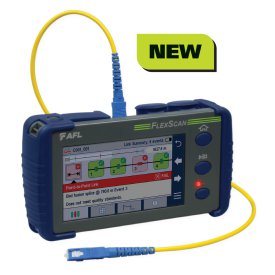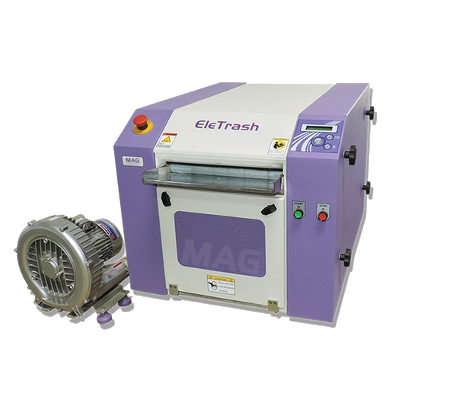A comprehensive overview to robotic vision in industrial automation
Wiki Article
Recognizing How an Optical Measurement System Enhances Precision in Industrial Applications
Optical measurement systems play an important role in boosting accuracy throughout numerous industrial applications. By leveraging advanced innovations such as laser interferometry and 3D imaging sensors, these systems use high-resolution, non-contact measurements. This ability minimizes the threat of damaging sensitive elements while ensuring accuracy. The influence of these systems prolongs past simple dimensions. Exploring their advantages, applications, and future patterns reveals an intricate landscape of advancement and difficulties that values more detailed examination.The Fundamentals of Optical Measurement Systems
Optical measurement systems offer as vital tools in numerous industrial applications, offering precise information collection and evaluation. These systems utilize light as a main ways of measurement, leveraging optical concepts to evaluate dimensions, placements, and surface area qualities of objects. They include components such as lasers, cams, and sensors, which interact to record high-resolution photos and information.The innovation makes it possible for non-contact measurements, decreasing the threat of damaging sensitive elements. Optical measurement systems are flexible, discovering energy in top quality control, setting up confirmation, and dimensional evaluation throughout different sectors. They are especially efficient in environments where typical measurement techniques may fall short, such as measuring intricate geometries or observing rapid activities.
As industries continue to advance, the integration of optical measurement systems will certainly remain vital for making certain accuracy and efficiency, inevitably improving product top quality and functional performance in different making procedures.
Secret Technologies Behind Optical Measurement
Key technologies such as laser interferometry methods and 3D imaging sensing units play a crucial duty in the efficiency of optical measurement systems (optical measurement system). These innovations enable exact measurements and detailed analysis in various industrial applications. Comprehending their functionalities is essential for using the full possibility of optical measurement systemsLaser Interferometry Techniques
Various laser interferometry methods have actually reinvented the area of optical measurement, using unmatched precision and accuracy in different commercial applications. These methods use the disturbance of coherent light waves to determine range, displacement, and surface abnormalities with nanometer-level precision. Common methods include Michelson interferometry, which divides a light beam of light and assesses stage changes, and Fabry-Pérot interferometry, known for its high resolution in determining small changes. Furthermore, laser Doppler interferometry employs regularity changes to assess speed, making it very useful in dynamic dimensions. The adaptability of these methods permits their combination right into varied production procedures, enhancing top quality control and guaranteeing adherence to stringent tolerances. Consequently, laser interferometry remains to play a vital duty in advancing commercial measurement criteria.3D Imaging Sensors
Developments in measurement innovation have actually resulted in the advancement of 3D imaging sensing units, which play a considerable duty in optical measurement systems. These sensing units capture three-dimensional information via different methods such as triangulation, time-of-flight, and organized light. By properly reconstructing the form and dimensions of objects, 3D imaging sensors boost the accuracy of dimensions in industrial applications. They provide real-time comments, helping with high quality control and guaranteeing that elements fulfill rigorous requirements. In addition, their ability to run in tough environments, such as differing illumination conditions, makes them important in manufacturing processes. As industries increasingly embrace automation, the combination of 3D imaging sensors right into optical measurement systems is expected to drive more improvements in effectiveness and precision.Benefits of Optical Measurement in Industry
Although standard measurement methods have long been the standard in industrial settings, optical measurement systems use considerable advantages that enhance accuracy and performance. These systems utilize light to capture information, causing high-resolution dimensions that are usually unattainable with standard methods. The non-contact nature of optical measurements lowers the danger of damaging sensitive parts throughout the evaluation process. In addition, the speed of optical dimensions allows for rapid information purchase, helping with timely decision-making in hectic commercial atmospheres.Optical systems are adaptable, with the ability of gauging various products and forms without the requirement for considerable recalibration. This versatility adds to boosted process and productivity. Furthermore, the automation potential of optical measurement systems reduces human error, making sure regular quality assurance. Overall, the assimilation of optical measurement technology stands for a dynamic change towards boosted accuracy and reliability in commercial operations, eventually bring about enhanced product high quality and operational effectiveness.
Applications of Optical Measurement Systems

Optical measurement systems play a critical function in boosting manufacturing look at more info process optimization by supplying precise data for decision-making. These systems ensure quality assurance guarantee via real-time monitoring and evaluation of manufacturing metrics. As markets significantly embrace these modern technologies, their effect on efficiency and product dependability ends up being obvious.
Production Process Optimization
Enhancing production process efficiency is progressively reliant on the combination of optical measurement systems. These systems supply real-time information on numerous criteria, allowing manufacturers to examine procedures with a high level of precision. By allowing exact measurements of dimensions, surface area characteristics, and material properties, optical measurement systems facilitate the identification of inefficiencies and traffic jams in assembly line. The instant feedback from these systems equips designers to make informed choices, resulting in enhanced machining, setting up, and ending up procedures. The ability to keep track of conditions continuously allows for adaptive adjustments, minimizing downtime and waste. As industries go for higher performance and lowered operational prices, optical measurement systems become critical tools for improving manufacturing procedure optimization.
High Quality Control Guarantee
The assimilation of optical measurement systems greatly effects high quality control guarantee in industrial setups. These systems provide accurate and non-destructive measurements, making it possible for suppliers to find problems and inconsistencies early in the production process. By making use of advanced imaging methods, such as laser triangulation and interferometry, optical measurement systems ensure that components fulfill strict specifications. This facilitates real-time surveillance, reducing waste and reducing the threat of defective products reaching the market. In addition, the data gathered can be assessed to improve production processes even more, causing continual renovation. Inevitably, the fostering of optical measurement systems boosts integrity and uniformity in quality assurance, fostering better confidence among stakeholders and consumers alike in the end products supplied.Instance Studies: Successful Executions
Countless industries have successfully integrated optical measurement systems to improve their operational effectiveness and product high quality. In the automotive field, a noticeable supplier took on a laser triangulation system to keep an eye on the placement of automobile elements. This application considerably decreased assembly mistakes, leading to improved safety and security and lowered expenses.In the aerospace industry, a leading aircraft supplier used optical metrology for accuracy dimensions of wind turbine blades, achieving a decrease in making resistances and far better efficiency requirements.
Similarly, a customer electronics company applied optical measurement innovation during the manufacturing of mobile phone displays, causing boosted quality assurance and a decrease in faulty products.
These study show just how optical measurement systems not only enhance accuracy however additionally add to general functional effectiveness, demonstrating their worth across numerous markets. By attending to particular requirements, these systems have actually verified to be important tools in contemporary commercial applications.
Challenges and Limitations of Optical Measurement
While optical measurement systems use substantial benefits in various industrial applications, they are not without their difficulties and limitations. One significant concern is sensitivity to ecological problems, such as temperature variations, humidity, and dirt, which can detrimentally affect measurement precision. Furthermore, optical systems often require accurate positioning and calibration, making them susceptible to human mistake throughout setup and procedure. One more limitation is the possibility for interference from ambient light, which can misshape dimensions and demand complicated filtering methods. Certain materials and surfaces might present troubles, as reflective or transparent qualities can lead to irregular analyses. The expense of high-quality optical components and systems can also be an obstacle for some sectors, limiting widespread fostering. Specialized training is commonly needed for employees to effectively run and preserve these systems, adding to the overall intricacy and operational challenges.Future Trends in Optical Measurement Modern Technology
As innovations in technology remain to form commercial processes, the future of optical measurement systems is positioned for considerable evolution. Emerging fads show a shift towards boosted combination of expert system and learn the facts here now equipment learning, making it possible for systems to examine data in real-time, identify patterns, and boost decision-making processes. Furthermore, the advancement of miniaturized sensing units and advanced optics is anticipated to bring about even more small and versatile measurement remedies, making them obtainable for a larger series of applications.In addition, the consolidation of 3D imaging and high-resolution abilities will certainly enable unprecedented accuracy in measurements, which is vital for markets such as aerospace and automobile. The promote automation and Sector 4.0 will certainly additionally drive the need for optical measurement systems that can easily interface with other technologies. As these trends unfold, optical measurement systems will likely end up being essential to accomplishing higher effectiveness and accuracy across different industrial sectors.

Frequently Asked Concerns
Exactly How Do Optical Measurement Systems Compare to Traditional Measurement Approaches?
Optical measurement systems use higher accuracy and rate compared to typical approaches - fibre testing equipment. They minimize human mistake, improve information collection effectiveness, and provide real-time results, making them significantly chose in various commercial applications for precise dimensionsWhat Industries Benefit the A Lot Of From Optical Measurement Systems?
Optical measurement systems significantly benefit industries such as aerospace, vehicle, and electronics. Their capability to provide high-precision measurements boosts quality assurance, read this reduces production mistakes, and improves general performance, making them crucial in competitive production environments.Can Optical Measurement Systems Be Personalized for Details Applications?
Optical measurement systems can certainly be personalized for specific applications. By readjusting specifications such as wavelength, resolution, and calibration techniques, markets can customize these systems to satisfy unique precision and accuracy requirements successfully.What Is the Upkeep Requirement for Optical Measurement Systems?
The maintenance demands for optical measurement systems typically include routine calibration, cleansing of optical components, and software application updates. Abiding by these practices guarantees accuracy, dependability, and long life of the measurement tools in various applications.How Do Environmental Elements Impact Optical Measurement Accuracy?
Ecological aspects, such as temperature level variations, moisture, and dirt, significantly effect optical measurement accuracy. These aspects can distort light paths and hinder sensor readings, eventually jeopardizing the integrity and precision of dimensions in commercial setups.Report this wiki page